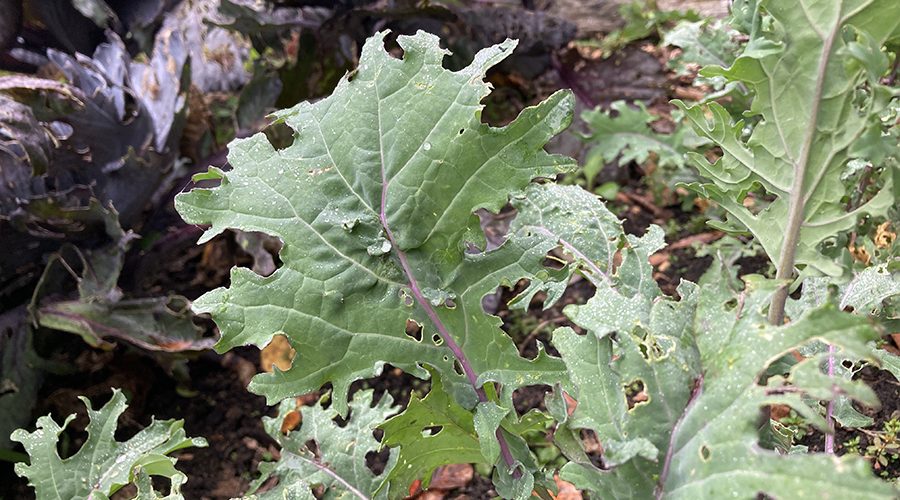Perhaps some newly planted winter lettuces are looking droopy, or some young kale seems to neither be dying nor growing like the Red Russian Kale pictured above which was planted in June, but simply didn’t start growing properly until September.
In this article we’re looking at a few potential causes of plant distress to help you decide whether or not to give up on the plants.
Environment & Growing Conditions
There is any combination of difficult conditions that a plant may be facing, so this is a good place to start with diagnosing why plants may not be thriving. It is so often something (or several things) from the list below that is the cause of plant distress.
- Soil is too wet – waterlogged soil makes it very difficult for the roots and the plants can suffer as a result and may even succumb to root rot. If you’re growing in heavy clay soil, this may be a problem at this time of year when there is more rainfall. Try digging some channels for excess water to run off if this is the case. Equally, it can be problematic if you are growing in pots that do not have adequate drainage – raising the pots off the ground (ie standing them on a pallet or similar) can help, and you shouldn’t need to stand pots or containers in water at this time of year.)
- Soil is too dry – less likely to be an issue now that we are in autumn, but worth bearing in mind for next summer!
- Not enough sunlight – this can be difficult during the late autumn and winter months as many sites that get adequate sunlight in the summer can be relatively hidden from sunlight with the sun being lower in the sky now.
- Too hot/cold – obviously it is unlikely that the soil will be too hot for plants at this time of year, but it can be that plants are not warm enough. There’s not much that can be done for outdoor plants during winter months, but we would definitely advise using horticultural fleece or cloches, especially if you are further north in the country where temperatures are likely to be lower.
- Strong winds – a lot of strong winds can be difficult for plants to handle. Shelter from the prevailing wind will help, if you can more pots and containers. If growing in an exposed site, you may want to consider using a cloche tunnel that you can peg down from the wind, as this will protect the plants from the wind.
- Lack of nutrients – this will normally show through some discolouration of the leaves which may be a little on the pink or yellow side. A liquid feed and mulching with fresh compost will usually be enough to put things right at this time of year.
Spacing & Overcrowding
A common error is to plant too many plugs in a pot or container, or to try and squeeze plants into a bed by planting them a little closer together than is right for the plants. When this happens, the plant does not have adequate space for its roots, and can result in stunted plants. It can also mean that the plants has less access to sunlight, which again causes slow/no growth.
All our plants come with a growing guide that details spacing requirements, and the information is available through our online growing guides as well. If you have planted your plug plants too close together, you can usually pull them up and re-plant them further apart or in new pots quite happily, but try and do so as soon as you can.
Should I give up?
Our feeling is that it is more rewarding to try and figure out what the plant is lacking/struggling with and to put things in place to rectify that. Then leave it a few weeks to see if you notice a change. Hopefully after 3-4 weeks you will see signs of the plants making better progress.

